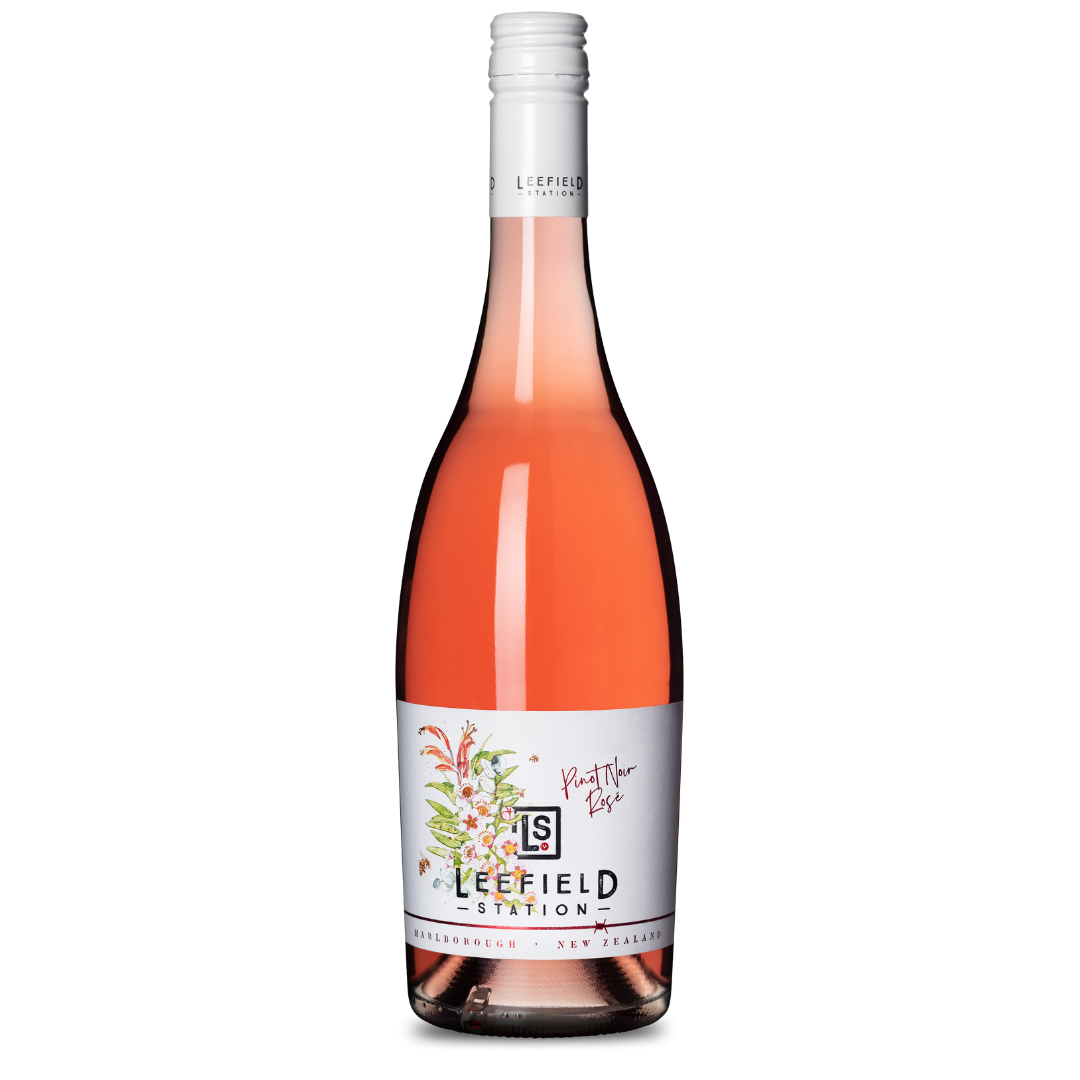Marisco Vineyards
LEEFIELD STATION PINOT NOIR ROSÉ 2024
LEEFIELD STATION PINOT NOIR ROSÉ 2024
6 bottles
Leefield Station Rosé 2024 delights with floral aromas, hints of wild berries, and cream. The elegant palate showcases pure red fruit, a touch of minerality, and a crisp, dry finish.
Perfect for sunny afternoons, pair it with a prosciutto and melon salad. Best enjoyed within 3 years to savour its youthful freshness.


Couldn't load pickup availability
Tasting Note
Tasting Note
TASTING NOTE
Demonstrating pure and delicate floral aromas with hints of wild berries and cream. The palate is elegant and intense, characterised by red fruit purity and a touch of minerality with a crunchy, dry finish.
FOOD MATCHING
Best enjoyed outdoors on a sunny afternoon pairedwith a refreshing prosciutto and melon salad.
CELLARING POTENTIAL
Crafted to enjoy while young and fresh; we recommend drinking this wine within 3 years of vintage date.
Winemaking
Winemaking
ORIGIN
Leefield Station, Waihopai Valley, Marlborough.
VARIETY
Pinot Noir.
WINEMAKING
Leefield Station Pinot Noir was machine harvested, fully de-stemmed and gently crushed prior to pressing. The juice was settled for 2 – 3 days, then racked clean to stainless tanks. This was followed by a slow, cool fermentation with select yeast strains chosen for their ability to capture and enhance aromatic and flavour intensity. Following fermentation, individual tanks were blended. The blended wine then underwent a period of maturation on fine lees to allow the various components to integrate.
ANALYSIS
- Alcohol - 12,5%
- pH - 3.26
- Titratable Acidity - 6.5g/L
- Residual Sugar - 3g/L
- Vegan Certified
Vintage
Vintage
VINTAGE
Vintage 2024 will be remembered for being one Marlborough’s smaller vintages but also for producing exceptional fruit quality.
Despite a dry winter and resulting low ground moisture levels, full dams and positive river flows supplied essential soil moisture for the start of the growing season with budburst in mid-September.
Minimal frosts occurred, and though November and December were warm, below-average temperatures potentially contributed to the smaller vintage.
From December to February, temperatures rose sharply, accompanied by above-average sunshine and below-average rainfall, leading to drought concerns and an early start to harvest.
Perfect weather aided steady picking from February until mid-April, allowing fruit to be picked in perfect condition at peak ripeness, delivering consistent levels of concentration and complexity of flavour.
Awards & Accolades
Awards & Accolades
Trophy - Best in class
- Aotearoa Regional Wine Competition 2024
Gold
- New Zealand International Wine Show 2024
About Leefield Station
About Leefield Station
Leefield Station has a mission of showcasing the best of Marlborough in one amazing property. Delicious grapes, well-kept sheep, cattle, and pigs – all alongside flourishing native bush sheltering productive beehives and teeming flora and fauna. It is nature co-existing perfectly – helping each other, in an amazing eco-system of its own.
Because we believe this is what modern farming looks like.
Share

